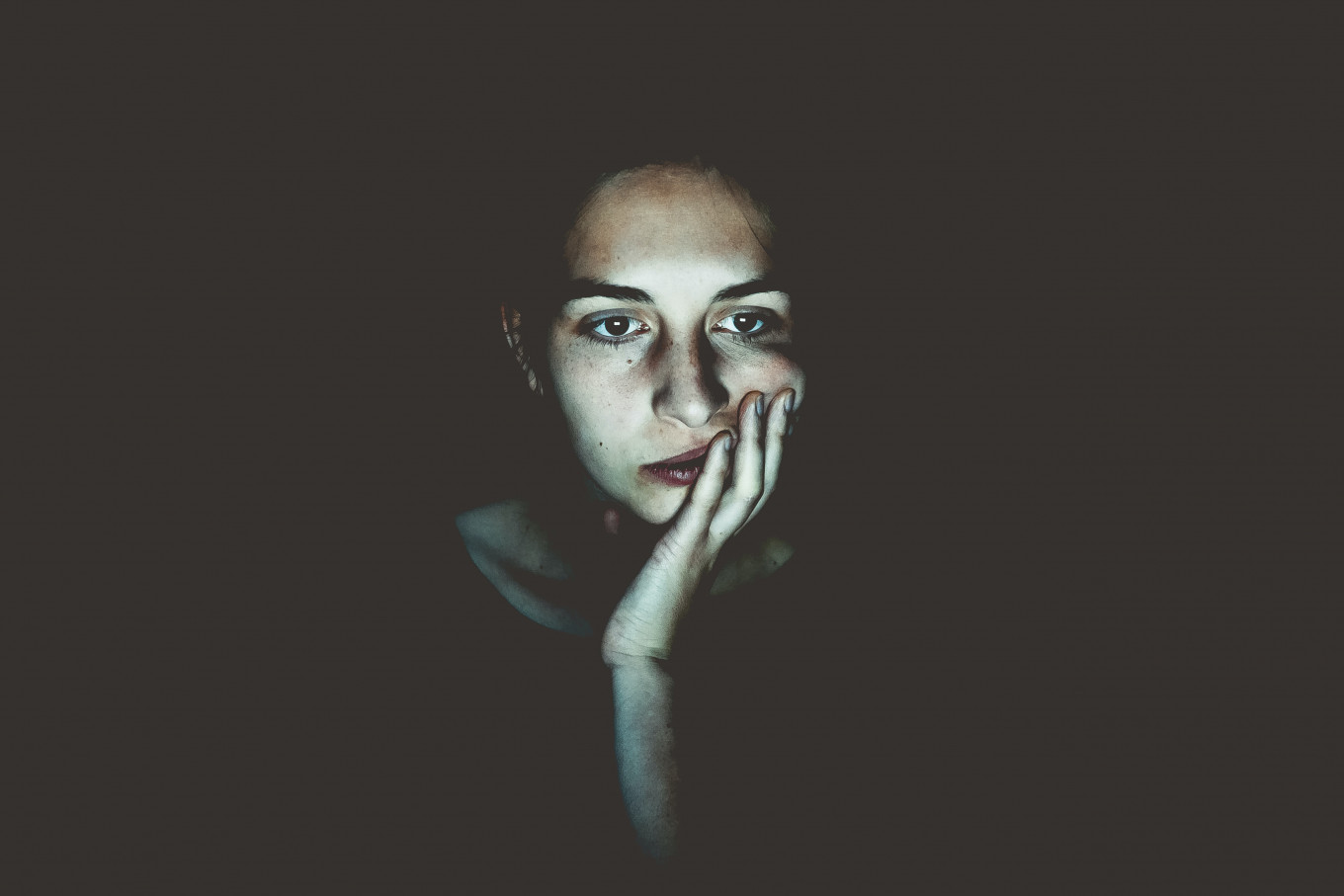Love and hate with the digital world as more people abstain from social media and online entertainment to regain their sense of self and mindfulness
Most of us came out of the pandemic a bit torn and tattered. Deprived of physical gatherings and exposed to uncertainties from continuously prolonged lockdowns and social restrictions, we turned to humanity’s technological advances whose arsenal encompasses an array of social media platforms, video conferencing systems and a deluge of entertainment from streaming services.
We fought hard against loneliness, but some were then left with another problem: an increased dependence on this said arsenal.
Compounded intensity
Cooped inside their respective houses for a good part of their time, people desperately yearned for connections to the outside world. Dreaming up moments where they could gather with friends and family without nagging uneasiness, the fear of unknowingly exposing loved ones with the sometimes-asymptomatic disease – or to catch it from others instead.
We fulfilled these yearnings through the internet: catching-up with friends over video conferencing platform Zoom or chatting with others through instant messaging services such as WhatsApp. We found solace in following each other’s Instagram feeds and tuning into their live videos. Instagram saw a 40 percent increase of users during the initial lockdown period, and by the beginning of 2023, there were 105.7 million Indonesians using the platform, accounting from the total of 167 million social media users (a drop from 2022’s 191 million users).
All of our social contact shifted online and, by the time we were out of the woods, some of us were already facing a higher reliance on this form of personal connection. This further compounded a longstanding social media problem of “the fear of missing out”, one among 11 other problems addressed by Meta themselves in a September 2021 release in response to The Wall Street Journal’s piece, “The Facebook Files”.
In 2022, Bandung based creative worker Ichiko (not her real name) realized that she could not take her hands off her smartphone, constantly checking for updates and reopening applications that she had already closed mere seconds ago. She did it mindlessly, not even sure what she was looking for.
“My mood was all over the place,” said Ichiko, speaking to The Jakarta Post on April 4, “as on one timeline there was everything. Work, exhibition invites, practically everything. People’s personal posts were there as well, along with memes and shitposts. Different moods and they were all jumbled together. It can easily overwhelm you in one minute.”

(Archive/Panji Indra)
Ichiko tried abstaining from all her social media accounts for a week after she discovered health influencer and therapist Qintari Aninditha on Instagram. “She was talking about this method called the ‘dopamine detox’,” said Ichiko.
During the abstaining week, Ichiko noted that the process was helpful for her. “I had more time to do other meaningful things and be more creative, as in when I was bored, I did not immediately turn to my phone and I often had this aha moments for unsolved works. If I scroll [social media], it’d just block my creative thinking,” she said. “But I was then back to scrolling again after the [abstaining] week.”
Brain chemistry
The dopamine detox, also referred to as “dopamine fast”, has been all the rage since its introduction in 2019. It was created by United States-based psychiatrist Cameron Sepah, who referred to the method, which he now coined Dopamine Fasting 2.0, as “an antidote to our overstimulated age.”
“Dopamine is just a mechanism that explains how addictions can become reinforced, and makes for a catchy title. The title’s not to be taken literally,” Sepah told the New York Times in 2019. Its catchy name, however, gained major traction with the masses and further spawned misconceptions, which Harvard Medical School instructor and physician Peter Grinspoon referred to as a “maladaptive fad.”
Some people interpreted his method differently and went for something more destructive and ascetic than what Sepah initially intended. Some interpreted it to be abstaining from even talking, by meditating and not showing up for work, among many other actions.
“It’s actually a form of cognitive behavioural therapy,” said Jakarta-based psychiatrist Lidya Heryanto regarding the highly popular method. “Dopamine is a neurotransmitter and a pleasure hormone that works in the reward-pleasure system in our brain.
“Let’s say that someone is studying, for instance, then he comes out as the top of the class. Or he competes, then he wins. He goes through a certain activity before achieving the reward. That someone would then replicate what he did to achieve that dopamine – that is pleasure,” Lidya continued.
She noted that, in the old, pre-internet days, people were much more used to pain and unpleasantness. “Process. Now, everything is instant,” she remarked. These shortened intervals in achieving the end of one’s journey for pleasure leads to an increased frequency of dopamine rush, which then would push one’s tolerance in the long run.
“Large amounts of dopamine instead poison our brain,” she noted. This was due to us memorizing an abnormal amount, because of the frequent dopamine jolts from likes, as normal. “When the intensity decreases, we’d feel unhappy.”
“What it means to ‘detox’ here is not literal. Dopamine will always be present,” she explained. “There’d be withdrawal, too. The first step in a ‘dopamine detox’ would be to find a ‘substituting behavior’. For instance, find other activities for substitutes such as sports, talking to others or maybe read a book. Extend the duration until the ‘pleasure’ is achieved. The aim is to normalize the brain with a balanced dopamine amount.”
To make one’s own way
While Ichiko managed to come across the method online and willingly abstained from social media in the effort to detox, or rebalance, her brain chemistry, Bandung-based visual merchandiser Adya Grahita and Jakarta based artist/musician Monica Hapsari wandered into the same path unintentionally.
Adya was feeling like she was at the end of the line when her job hunt did not bear fruit months after her previous job. Her desperation were amplified by social media, where her friends were sharing updates of their lives, including their careers and achievements.
It drove her to all sorts of negative thoughts, where she was envious of others’ achievements, or was simply jealous of relationships that were pictured on social media. “It was toxic, and I grew more and more demotivated,” Adya said. She was driven to the brink when she decided to not open her accounts for months. “But it was more because I was afraid. Who am I to share anything about my life?”
In turn, she grew more mindful of her immediate surroundings after jumping off the bandwagon. “I grew closer to my family at home. I shared more with my parents and my sister,” said Adya.
In Monica’s case, her renouncing of social media happened when she started visiting a monastery in Bandung to learn meditation in the effort to overcome her chronic anxiety. “I was a patient of dr. Erwin Kusuma,” Monica said, referring to the renowned late psychiatrist. Monica’s approach was initially intended for her to finally steer off medication.
“I had heart palpitations and I was always under this feeling of wanting to cry,” Monica said. “It happened every time I went onto social media.” At one point, she could not sleep for as long as five days, and was losing her sense of self. It went on for 10 years.
During her ‘off-grid’ retreats, Monica was often tasked with sweeping the monastery and cleaning its dog kennel, which she found, at first, quite troubling. But she went on her own way to mindfulness when she discovered herself through soaking up her suffering, then moving on
“I started to see the dogs in a different light,” said Monica, holding back her tears. “I stopped thinking about myself and started to think about them. These dogs were rescued from the streets, some of them were even beaten by people and disease-ridden.” She cried.
She grew aware of her immediate surroundings and established a real relationship with them. After that, she went on a journey to the Himalayas, fully detached from the digital world for a month. She managed to find herself there.
“I’m not the only one who suffers in this world. [...] Once my perspective toward the world changed, my reality changed.”




Recommended Comments
There are no comments to display.
Join the conversation
You can post now and register later. If you have an account, sign in now to post with your account.
Note: Your post will require moderator approval before it will be visible.